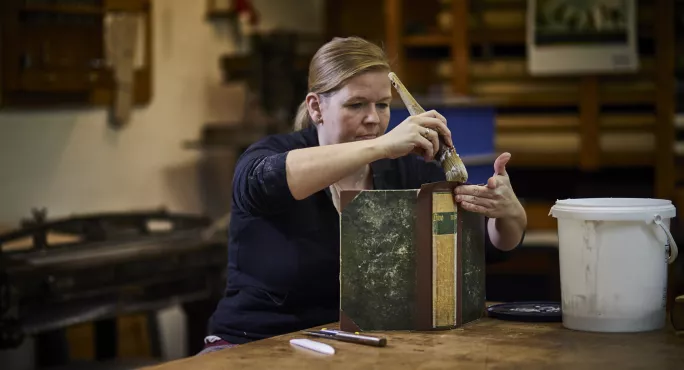Simplicity is something I value, especially when it comes to teaching, and the Book Creator app is one of the simplest apps I have come across.
It does exactly what it says on the tin: lets users create digital books.
It also allows you to add content including videos, photos and digital drawings as well as text and speech recordings.
Quick read: Edtech review: shout out to Showbie
Quick listen: We need to level up our understanding of video games
Want to know more? Is tech killing our pupils’ memories?
I’ve used it for tasks varying from making a comic book about my own dog (for my students) to capturing explanations of place value in maths.
When you create a document, you select whether you’d like portrait or landscape view, and whether it should look like a comic book or a blank canvas. Then you can add images, videos, drawings, sound clips, maps, hyperlinks and other files.
The comic book features are excellent; the creators have included various comic-style onomatopoeic stickers, captions and speech bubbles which can easily be added. I’ve used this to get children learning to retell stories using pictures of themselves as the action, and they loved it.
Children can export their work as PDFs, or as video, which means that they can be published via a platform such as YouTube.
Teachers can create an online library of children’s work, the links for which can easily be copied into a QR code, enabling digital work to be put on display.
The other way to export, which is particularly useful from a teaching perspective, is to share it as an editable template, where you can lock shapes so students just double tap to insert their answers.
In-class application
Some ideas, then. In history, I’ve set the children’s work up as an archaeologist’s notepad, where they take photos and notes of an “ancient cave”, adding detail to it later in the scheme of learning.
In maths, pupils created a guidebook to place value, using photos of different manipulatives, example questions, along with voice-recorded explanations of their thinking.
In English, the possibilities are endless. We’ve created our own children’s storybooks, instruction leaflets for surviving in the wilderness, guidebooks to Ancient Greece and information packs about planets.
For parental engagement, it’s also possible to create online information packs to upload to the online library, which can then be sent as a link in an email, or put on display as a QR code. I created a guide to online safety which has been distributed in this format.
Potential pitfalls
One piece of advice I would give anyone wanting to use the app would be to set up your school carefully with pricing. You can download the free version, which allows you a grand total of two books.
We managed for a while with this by getting children to delete content and rewrite it, but it does seriously limit what you’re able to do. There are school packages available, or you can pay for each individual app (per device), which is £5.
In addition to the pricing structure, which is a little confusing, the integration between the app and the online “library” version of the platform is not smooth, and can occasionally cause syncing problems between books created on the app and books created online.
There is no way to link your app to your account on the online version, which means books created on the app must be uploaded separately, which isn’t all that straightforward.
The other potential pitfall to be aware of is that while Book Creator is a fantastic app for introducing children to word processing and publishing, the features are nowhere near as advanced as apps like Pages and KeyNote for teaching digital skills, which does somewhat limit what can be produced.
For example, you aren’t able to use fonts of your own (which now with iPadOS is actually possible in most other apps) and the range of shapes available is quite limited. It’s great for primary children but would possibly limit those with more advanced digital skills.
You can see one of my eBooks, created in Book Creator, here.
Rachel Walker is a Year 5 teacher, and digital and maths leader at Sneinton St Stephen’s CofE Primary School in Nottingham. She is an Apple Distinguished Educator and tweets @mrswalkerteach


